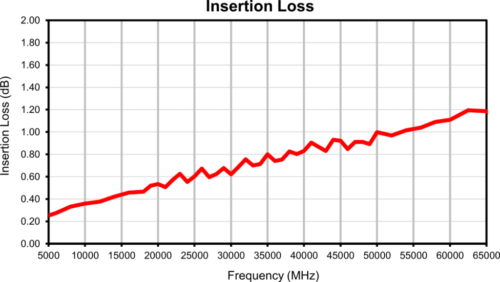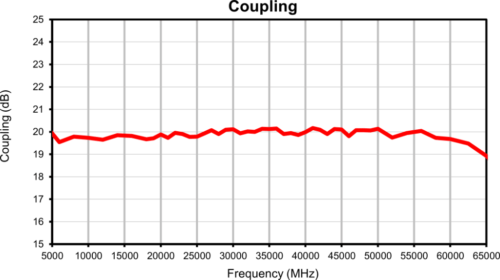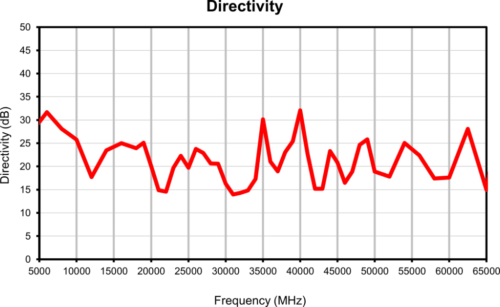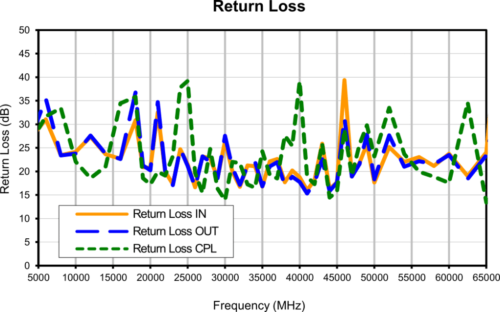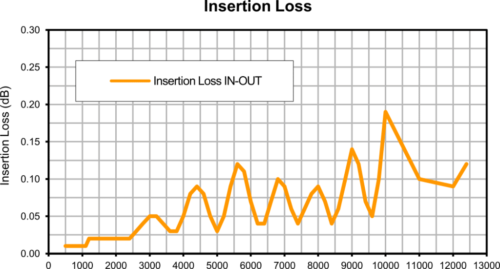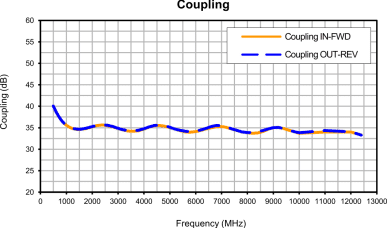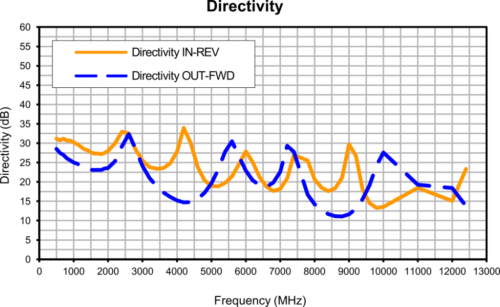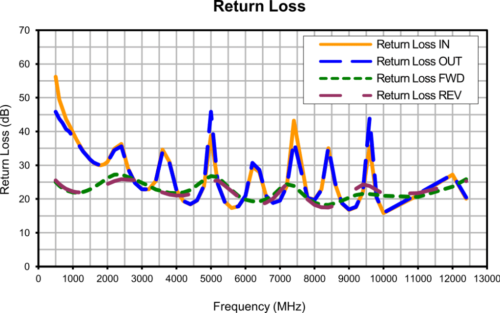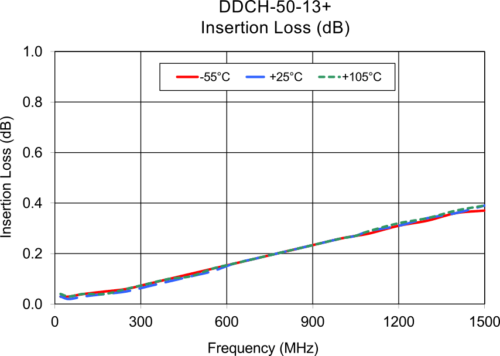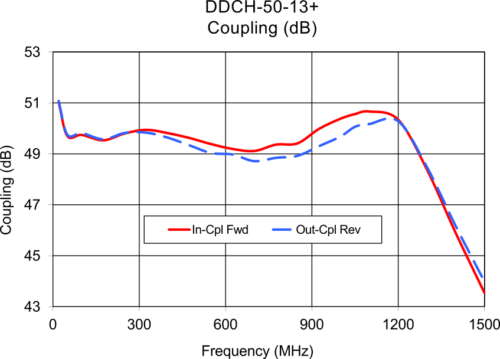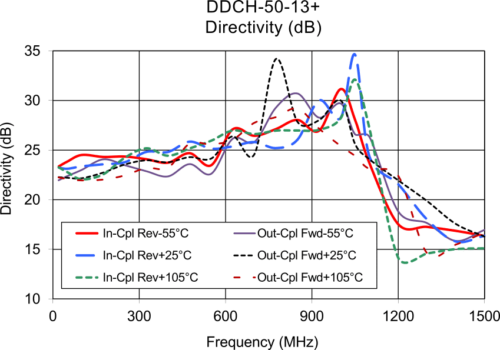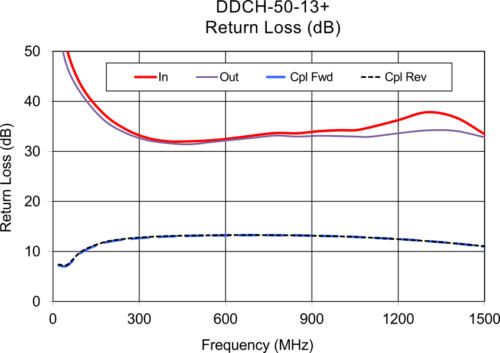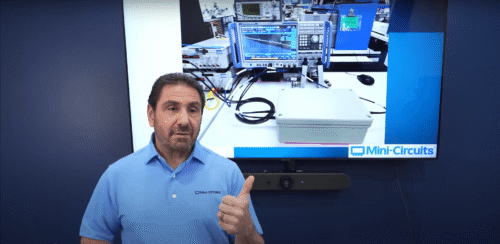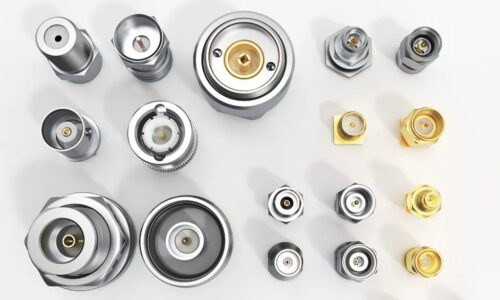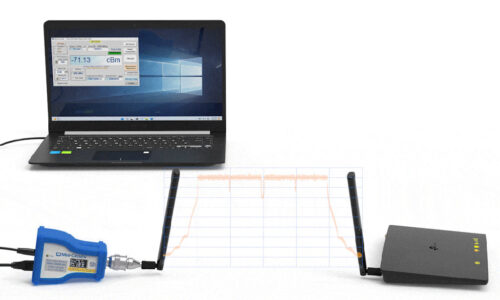Directional Couplers: Their Operation and Application
Urvashi Sengal
Applications Engineer, Mini-Circuits
Directional couplers are an important type of signal processing device. Their basic function is to sample RF signals at a predetermined degree of coupling, with high isolation between the signal ports and the sampled ports — which supports analysis, measurement and processing for many applications. Since they are passive devices, they also operate in the reverse direction, with signals injected into the main path according to the devices’ directionality and degree of coupling. There are a few variations in the configuration of directional couplers, as we shall see below.
Definitions
Ideally, a coupler would be lossless, matched and reciprocal. The basic properties of three- and four-port networks are isolation, coupling and directivity, the values of which are used to characterize the couplers. An ideal coupler has infinite directivity and isolation, along with a coupling factor selected for the intended application.
The functional diagram in Fig. 1 illustrates the operation of a directional coupler, followed by a description of the related performance parameters. The top diagram is a 4-port coupler, which includes both coupled (forward) and isolated (reverse, or reflected) ports. The lower diagram is a 3-port structure, which eliminates the isolated port. This is used in applications that only need a single forward coupled output. The 3-port coupler can be connected in the reverse direction, where the port that was formerly coupled becomes the isolated port:

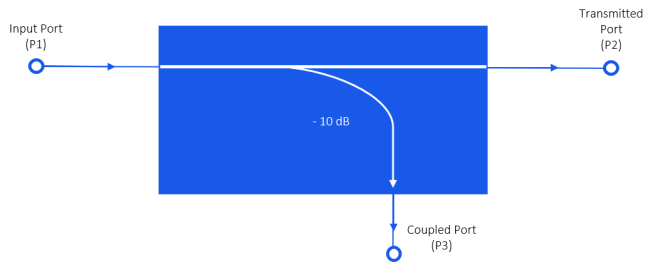
Performance characteristics:
- Coupling Factor: This indicates the fraction of the input power (at P1) that is delivered to the coupled port, P3
- Directivity: This is a measure of the coupler’s ability to separate waves propagating in forward and reverse directions, as observed at the coupled (P3) and isolated (P4) ports
- Isolation: Indicates the power delivered to the uncoupled load (P4)
- Insertion Loss: This accounts for the input power (P1) delivered to the transmitted (P2) port, which is reduced by power delivered to the coupled and isolated ports.
The values of these characteristics in dB are:
Coupling = C = 10 log (P1/P3)
Directivity = D = 10 log (P3/P4)
Isolation = I = 10 log (P1/P4)
Insertion Loss = L = 10 log (P1/P2)
Types of Couplers
Directional Couplers:
This type of coupler has three accessible ports, as shown in Fig. 2, where the fourth port is internally terminated to provide maximum directivity. The basic function of a directional coupler is to sample the isolated (reverse) signal. A typical application is measurement of reflected power (or indirectly, VSWR). Although it can be connected in reverse, this type of coupler is not reciprocal. Since one of the coupled ports is internally terminated, only one coupled signal is available. In the forward direction (as shown), the coupled port samples the reverse wave, but if connected in the reverse direction (RF Input on the right), the coupled port would be a sample of the forward wave, reduced by the coupling factor. With this connection, the device may be used as a sampler for signal measurement, or to deliver a portion of the output signal to feedback circuitry.

Advantages:
- Performance can be optimized for the forward path
- High directivity and isolation
- The directivity of a coupler is strongly affected by the impedance match provided by the termination at the isolated port. Furnishing that termination internally ensures high performance
Disadvantages:
- Coupling is only available on the forward path
- No coupled line
- The coupled port power rating is less than the input port because the power applied to the coupled port is almost entirely dissipated in the internal termination.
Example:
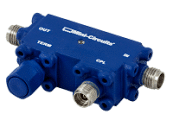
Mini-Circuits ZCDC20-E18653+ is a coaxial directional coupler with 20 dB nominal coupling across the 18 to 65 GHz frequency range. This model provides RF input power handling up to 12W and passes DC current up to 0.48A
Bi-directional couplers:
This coupler type has four ports, all accessible for the customer to use. It has a symmetric design, allowing forward and reverse signals to be sampled simultaneously. It is the designer’s responsibility to properly match or terminate both coupled ports.

Advantages:
- Symmetric design
- Input and output ports are interchangeable
- There are two transmission lines. Coupled line works the same as the mainline
- It has forward and reverse coupling
Disadvantages:
- Design is critical to maintaining good performance in both directions.
- The directivity of the coupler depends on how well the isolated port is terminated.
Example:

Mini-Circuits’ ZGBDC35-93HP+ is a coaxial bi-directional coupler with 35 dB nominal coupling across the 900 to 9000 MHz frequency range. This model provides 250W RF input power handling and passes DC current up to 3A
Dual Directional Couplers:
This third type of coupler is a combination of two 3-port couplers with their main lines cascaded, and their internally terminated ports facing each other at the interface between the couplers. This configuration provides bi-directional coupler action, but with independent use of the coupled ports. The primary advantage is that a mismatched load applied to either port will not affect the other.

Advantages:
- Performance can be optimized for both forward and reverse paths
- Higher directivity and isolation can be achieved
- Provides forward and reverse coupling
- Directivity of one path is not affected by mismatch present on the other path
- Can also be used to simultaneously monitor both the forward and reverse power of a system
Disadvantages:
- Usually involves two back-to-back directional couplers
- Larger size compared to directional and bi-directional couplers
- No coupled line is present (not accessible at both ends)
- Higher insertion loss than the single directional and bi-directional coupler
Example
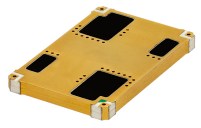
Mini-Circuits DDCH-50-13+ is a stripline-based surface-mount dual-directional coupler with a 50 dB nominal coupling ratio across the 20 to 1000 MHz frequency range. This model provides up to 120W RF input power handling and DC current passing up to 4A.
Directional Coupler Applications
Reflectometer
When connected as shown in Fig. 2, the coupler provides a sample of the reflected wave at the coupled port. This allows measurement of reflected power, representing the degree of mismatch of the load. When placed at the transmitter output, this configuration can monitor the VSWR of the antenna system, both for measurement and monitoring. Many RF systems include adjustments for minimum VSWR, while others include detection of excessive VSWR for circuit protection, usually by either reducing power or shutting down.
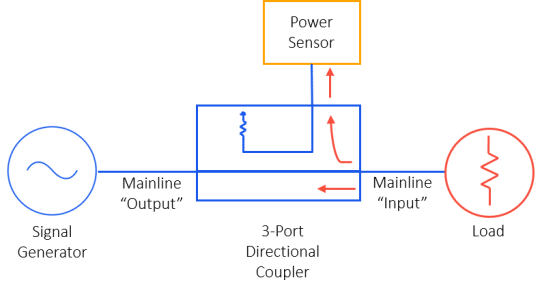
Forward sampling
When connected in reverse, the coupled port provides a sample of the output (forward signal), attenuated by the coupling factor. This sample can be used for waveform monitoring, spectrum analysis, and other test and measurement functions.
Leveled generator
The sample may also be used to drive feedback circuitry. One important application of this type is leveling the amplitude of a signal generator, providing a constant signal source for a test system.
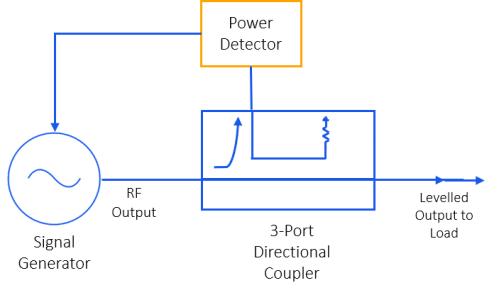
Receiver intermodulation test setup
The test signals for 2-tone testing may be combined in either a directional coupler or a power combiner. Both methods will provide the necessary isolation between the signal sources.
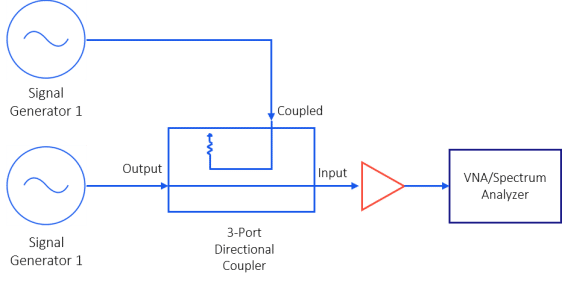
Bi-directional Coupler Applications
Forward and reverse sampling
Although reflected power or VSWR is important, it may be more useful to simultaneously sample both forward and reflected signals. This function is provided by a bi-directional coupler, which allows monitoring or measurement of output power (forward) and reflected power (reverse). Built-in test (BIT) systems, production testing, and routine operational monitoring all benefit from bi-directional coupling.
Reflectometer
This is a circuit element that provides measurement of forward power and reflected power (typically calibrated as VSWR). This is a common, and highly useful, test function in RF laboratory and production test environments. A reflectometer may be either the sampling portion of a stand-alone power/VSWR measuring instrument, or it may be implemented as a component within a test system, communication equipment, or other RF system (e.g, MRI or RF heating).
Dual Directional Coupler Applications
Forward and reverse sampling
As noted above, and in Fig. 4, the dual directional coupler acts as a bi-directional coupler, but with separate forward and reverse coupling paths. This provides isolation that eliminates the effects of mismatch of one path on the other path.
Reflectometer (More accurate results than bi-directional)
The typical use of bi- and dual direction couplers is the reflectometer. When implemented using a dual coupler, accuracy is improved, especially under conditions where one coupled port or the other may have significant mismatch.
Summary
Directional couplers are important devices in RF systems. Their ability to sample either the forward or reverse direction of signal propagation allows a wide range of applications in test, measurement, monitoring, feedback and control. This note should help system designers understand the function, architecture and performance of the coupler, to select a suitable type for their particular application.


